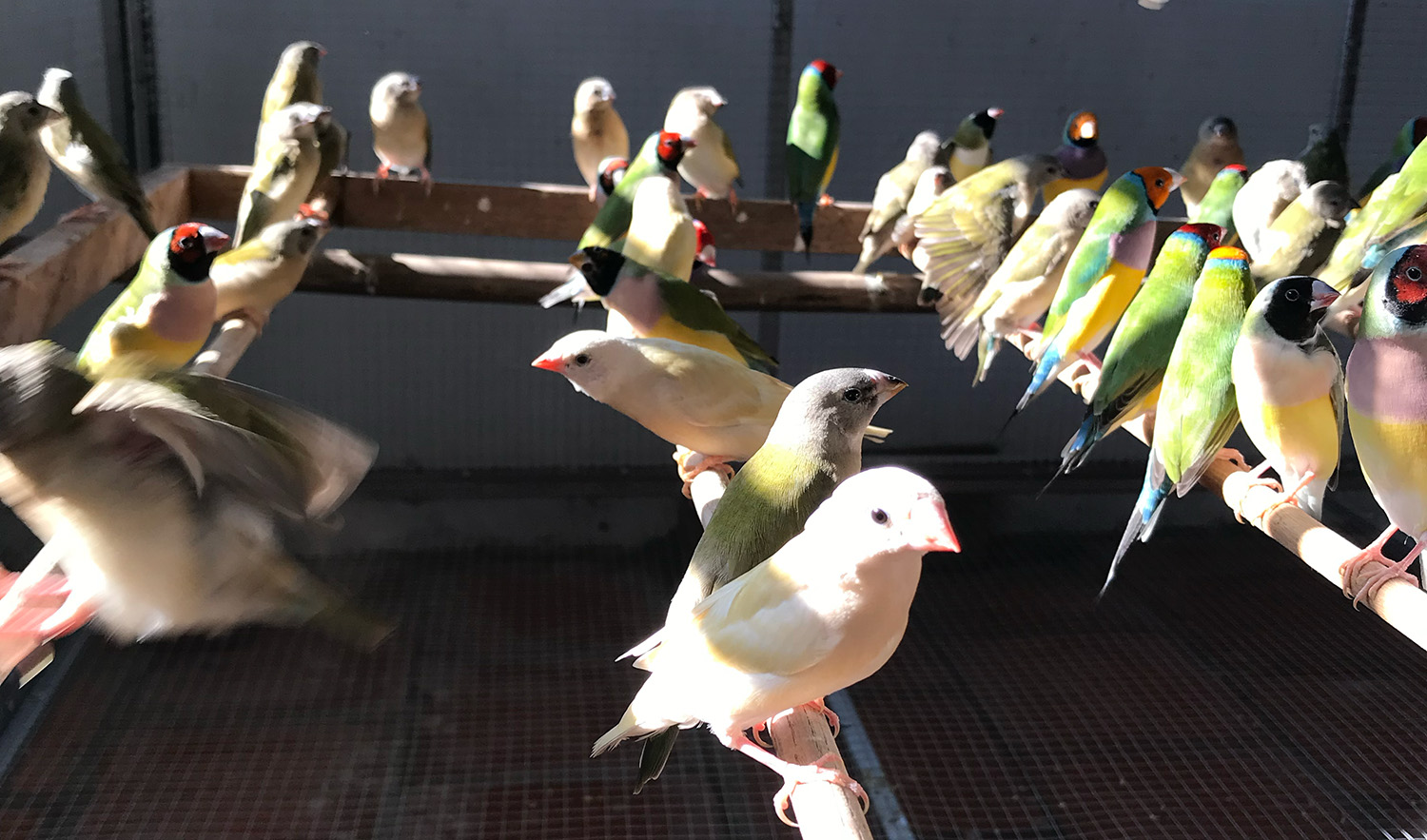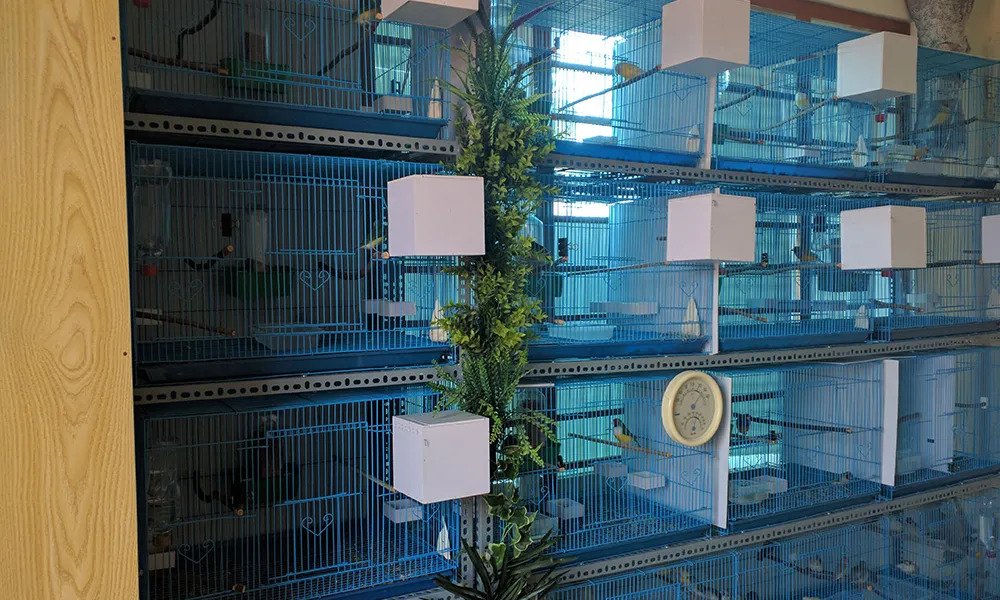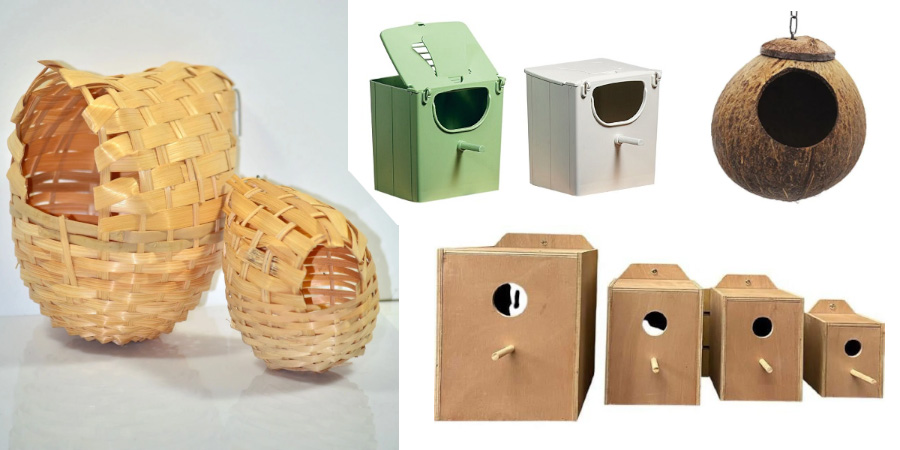
How to Choose a Nest Box for Your Finches
By longnkp / Jul 23 2024 / Housing
Welcome to the wonderful world of finch keeping! If you’re a bird enthusiast like me, you understand the joy and fulfillment that comes from watching these delightful little creatures flit around your home. One of the most important aspects of caring for finches is providing them with the right nest box. After all, a cozy and safe nest box is crucial for their well-being and breeding success. Today, I’ll guide you through everything you need to know about choosing the perfect nest box for your finches. Let’s dive in!
Understanding Your Finch’s Needs
Before we get into the specifics of nest boxes, it’s important to understand what your finches need. Finches are social birds that thrive in a comfortable and secure environment. They love to nest and will naturally seek out a place where they can lay their eggs and raise their young. This means that providing a suitable nest box is not just about comfort; it’s about ensuring your finches feel safe and secure.
Types of Finch Nest Boxes
There are several types of nest boxes available, and choosing the right one can seem overwhelming. Let’s break down the most common options and their benefits:
- Wooden Nest Boxes:
Wooden nest boxes are a popular choice among finch owners. They are sturdy, provide good insulation, and mimic the natural nesting conditions found in the wild. Look for boxes made from untreated wood to avoid exposing your finches to harmful chemicals.
- Plastic Nest Boxes:
Plastic nest boxes are easy to clean and maintain. They are also durable and can withstand the wear and tear of active finches. However, they might not offer the same level of insulation as wooden boxes, so they are better suited for indoor environments.
- Wicker Nest Baskets:
Wicker baskets provide a natural and rustic look, and many finches enjoy the texture and feel of these nests. They are breathable and allow for good air circulation, but they can be more challenging to clean and may not be as durable as other options.
- Coconut Shell Nest Boxes:
These nest boxes are made from hollowed-out coconut shells and offer a unique and natural nesting environment. They are eco-friendly and provide excellent insulation. Plus, they add a touch of tropical charm to your birdcage!

Types of Finch Nest Boxes
Size and Shape Matter
When it comes to choosing the right nest box, size and shape are crucial factors. Finch species vary in size, so it’s important to select a box that fits your specific type of finch. Here are some general guidelines:
- For smaller finches (e.g., Zebra Finches): Look for a nest box that measures around 4 inches in length, 4 inches in width, and 4 inches in height.
- For medium-sized finches (e.g., Society Finches): A nest box measuring around 5 inches in length, 5 inches in width, and 5 inches in height should be suitable.
- For larger finches (e.g., Gouldian Finches): Opt for a nest box that is approximately 6 inches in length, 6 inches in width, and 6 inches in height.
The shape of the nest box also plays a role in your finches’ comfort. Finches typically prefer a box with a square or rectangular shape, as it provides more room for nesting materials and allows the birds to move around comfortably. Additionally, a box with a sloping roof can help prevent moisture buildup and keep the nest dry.

The shape of the nest box
Entry Hole Size
The size of the entry hole is another important consideration. The hole should be large enough for your finches to enter and exit easily but small enough to provide a sense of security. Here’s a general guide:
- For smaller finches: An entry hole with a diameter of about 1.25 inches is ideal.
- For medium-sized finches: Aim for an entry hole with a diameter of around 1.5 inches.
- For larger finches: A diameter of about 1.75 inches should suffice.
If you’re unsure about the size, it’s always better to start with a slightly smaller hole and gradually enlarge it if needed.
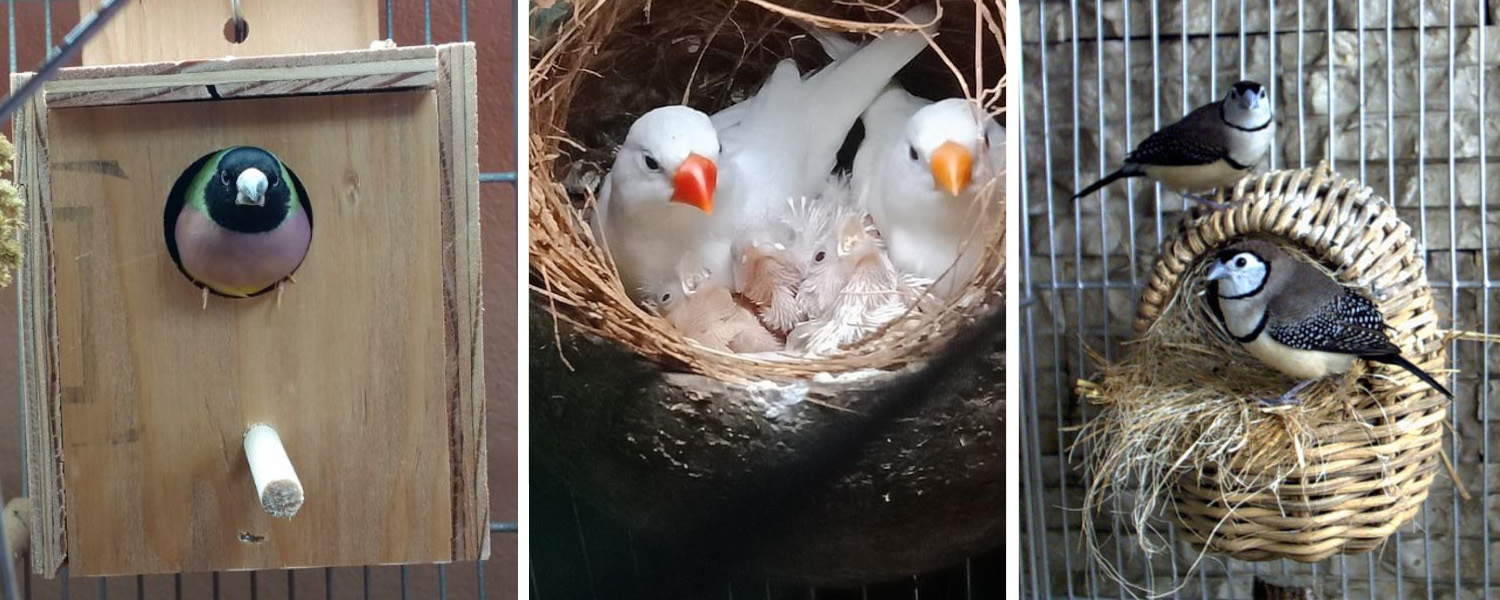
Some common entry hole sizes for finch nests
Placement of the Nest Box
Now that you’ve chosen the perfect nest box, it’s time to think about placement. The location of the nest box can significantly impact your finches’ sense of security and their breeding success. Here are some tips for optimal placement:
- Height:
Place the nest box at a higher level in the cage to mimic natural nesting habits. Finches feel safer when their nest is elevated, as it reduces the risk of predators.
- Privacy:
Ensure the nest box is in a quiet and secluded area of the cage. Finches prefer nesting in a private space where they won’t be disturbed by other birds or excessive human activity.
- Stability:
Make sure the nest box is securely attached to the cage to prevent it from falling or swaying. A stable nest box will help your finches feel more secure.
- Accessibility:
While privacy is important, you also need to ensure that you can easily access the nest box for cleaning and monitoring purposes. Look for nest boxes with a removable lid or a side door for easy access.
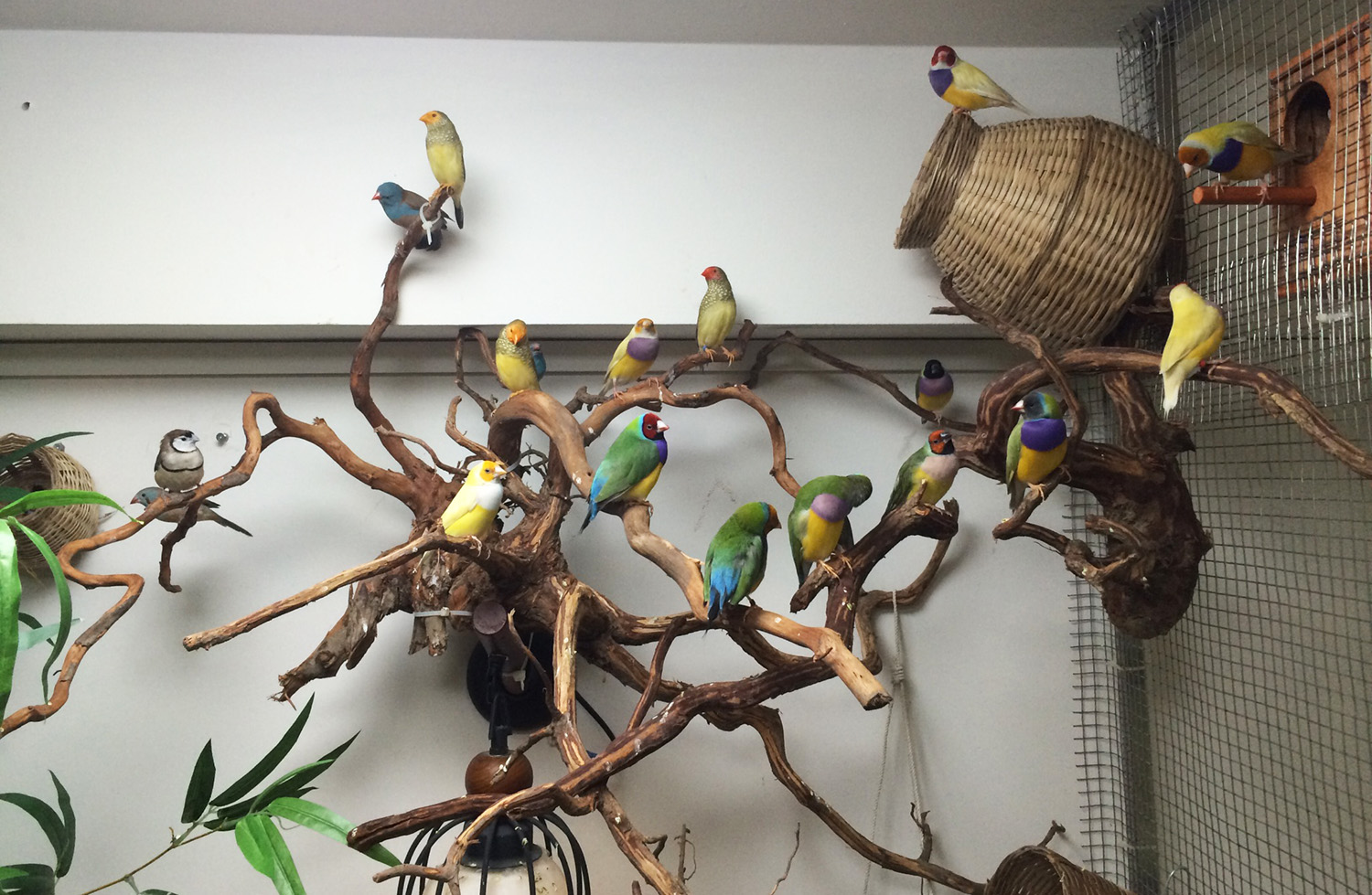
The nest box is placed in the top corner of the aviary
Nesting Materials
Once you have the nest box in place, the next step is to provide suitable nesting materials. Finches love to build their nests, and offering a variety of materials can encourage natural nesting behavior. Here are some safe and popular options:
- Coconut fibers: These natural fibers are soft, lightweight, and easy for finches to manipulate. They also provide good insulation.
- Dried grass: Grass is another natural material that finches enjoy using for nest building. Make sure it’s clean and free from pesticides.
- Cotton fibers: These are soft and comfortable for nesting. However, avoid synthetic materials that can be harmful if ingested.
- Feathers: Finches love incorporating feathers into their nests. You can provide clean, safe feathers or allow your finches to use their own molted feathers.
Avoid using materials like string, yarn, or other synthetic fibers, as they can pose a risk of entanglement or ingestion.
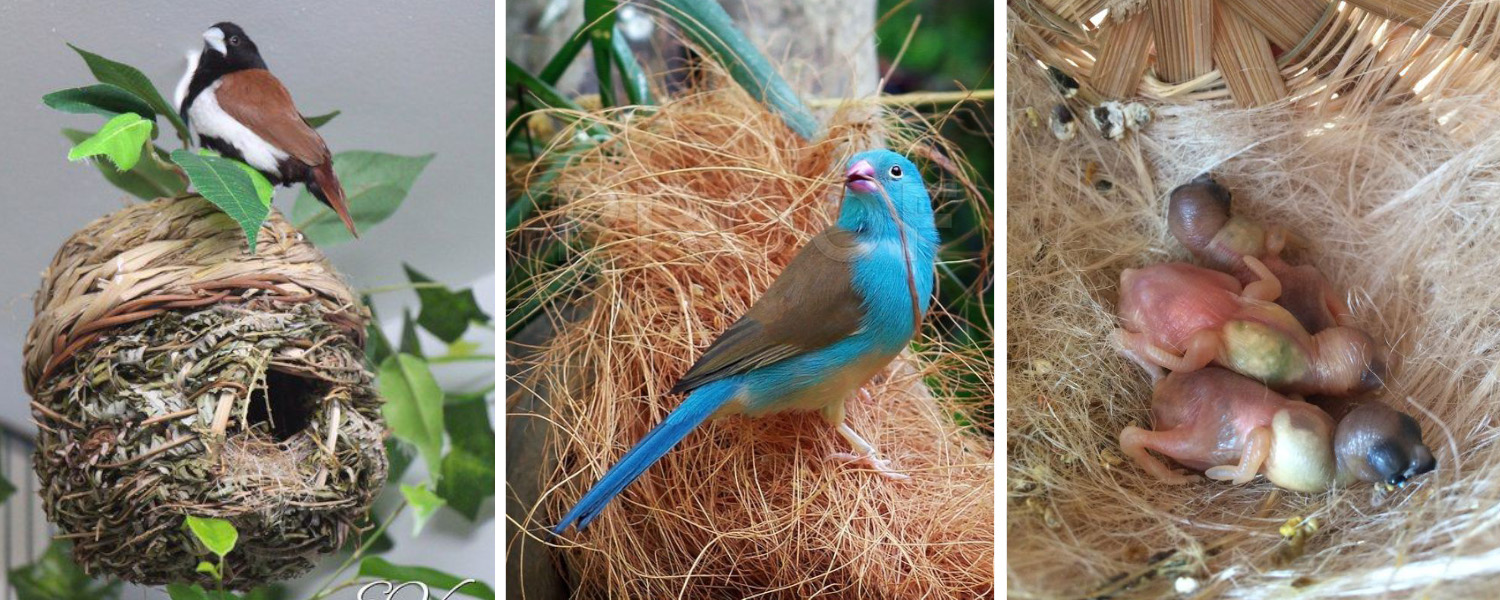
Nesting Materials
Monitoring and Maintenance
Regular monitoring and maintenance of the nest box are essential to ensure the health and safety of your finches. Here are some tips:
- Cleaning:
Clean the nest box regularly to prevent the buildup of droppings, mites, and bacteria. A dirty nest can lead to health issues for both adult finches and their chicks. Use a mild, bird-safe disinfectant and rinse thoroughly.
- Inspecting:
Regularly check the nest box for any signs of damage or wear. Ensure that it remains secure and stable in its position. Repair or replace the nest box if necessary.
- Observing:
Keep an eye on your finches’ behavior. If they seem stressed or reluctant to use the nest box, consider changing its location or providing additional privacy.
- Managing Breeding:
If you’re breeding finches, monitor the progress of egg laying and chick development. Be prepared to intervene if there are any issues, such as abandoned eggs or chicks not being fed properly.
Creating a Comfortable Environment
Choosing the right nest box is just one part of creating a comfortable and nurturing environment for your finches. Here are some additional tips to ensure your finches are happy and healthy:
- Proper Cage Size: Ensure your finches have enough space to fly and move around. A larger cage provides more room for exercise and reduces stress. For more information, read the article 'How To Choose The Perfect Cage for Your Finches'
- Balanced Diet: Provide a well-balanced diet that includes a variety of seeds, fresh fruits, vegetables, and sprout seeds. Supplements like cuttlebone and mineral blocks can also support your finches’ health.
- Fresh Water: Always provide clean, fresh water for drinking and bathing. Change the water daily to prevent contamination.
- Enrichment: Finches are active and curious birds. Provide toys, perches, and other enrichment items to keep them mentally stimulated and engaged.
- Temperature and Lighting: Maintain a stable temperature and provide natural or full-spectrum lighting to support your finches’ natural rhythms.
- Social Interaction: Finches are social creatures and thrive in the company of their own kind. Consider keeping them in pairs or small groups to promote social interaction and reduce loneliness.
Conclusion
Choosing the right nest box for your finches is a vital step in ensuring their well-being and breeding success. By understanding their needs and preferences, selecting the appropriate type, size, and shape of the nest box, and placing it in an optimal location, you can create a safe and comfortable environment for your feathered friends. Remember to provide suitable nesting materials, regularly monitor and maintain the nest box, and create an overall nurturing habitat for your finches. With a little effort and care, you’ll be rewarded with the joy of watching your finches thrive and flourish. Happy finch keeping!
Relative Posts
Recent Posts
- Unlocking the Secrets of Calcium for Healthy Captive Birds
- Hand Feeding Finches
- Why Parents Toss Chicks and How to Help
- Fostering Finches: Ensuring the Survival of Your Feathered Friends
- Sunshine and Finches: A Guide for Indoor Bird Keepers
- Air Sac Mites in Finches: Understanding, Preventing, and Treating
- Introducing New Foods to Your Finch
- Homemade Finch Food Recipes
- Choosing Breeding Gouldian Finch Pairs
- How to Choose a Nest Box for Your Finches

